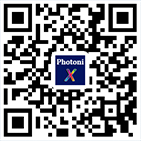| [1] |
Nelson RE. A brief history of thermophotovoltaic development. Semicond Sci Technol. 2003;18:S141–3.
|
| [2] |
Holmquist GA. TPV power source development for an unmanned undersea vehicle. AIP Conf. Proc. 1995;321:308–14.
|
| [3] |
Morrison O, Michael S, Edward W, William C. Use of a thermophotovoltaic generator in a hybrid electric vehicle. AIP Conf. Proc. 1999;460:488–96.
|
| [4] |
Wilt D, Chubb D, Wolford D, Magari P, Crowley C. Thermophotovoltaics for space power applications. AIP Conf Proc. 2007;890:335–45.
|
| [5] |
Schock A, Kumar V. Radioisotope thermophotovoltaic system design and its application to an illustrative space mission. AIP Conf Proc. 1995;321:139–52.
|
| [6] |
Teofilo VL, Choong P, Chang J, Tseng YL, Ermer S. Thermophotovoltaic energy conversion for space. J Phys Chem C. 2008;118:7841–5.
|
| [7] |
Butcher TA, et al. Heat transfer and thermophotovoltaic power generation in oil fired heating systems. Appl Energy. 2011;88:1543–8.
|
| [8] |
Fraas LM. “Economic potential for thermophotovoltaic electric power generation in the steel industry,” in 2014 IEEE 40th Photovoltaic Specialist Conference (PVSC) (Institute of Electrical and Electronics Engineers); 2014. p. 766–70.
|
| [9] |
Bianchi M, Ferrari C, Melino F, Peretto A. Feasibility study of a thermos-photo-voltaic system for CHP application in residential buildings. Appl Energy. 2012;97:704–13.
|
| [10] |
Lenert A, et al. A nanophotonic solar thermophotovoltaic device. Nat Nanotech. 2014;9:126–30.
|
| [11] |
T. Narayan et al., “World record demonstration of > 30% thermophotovoltaic conversion efficiency,” Proc. IEEE PVSC (2020).
|
| [12] |
Amy C, Seyf HR, Steiner MA, Friedman DJ, Henry A. Thermal energy grid storage using multi-junction photovoltaics. Energy Environ Sci. 2019;12:334–43.
|
| [13] |
Datas A, Chubb DL, Veeragavan A. Steady state analysis of a storage integrated solar thermophotovoltaic system. Prog Photovoltaics. 2013;21(5):1025–39.
|
| [14] |
Omair Z, et al. Ultraefficient thermophotovoltaic power conversion by band-edge spectral filtering. PNAS. 2019;116(31):15356–61.
|
| [15] |
Fan D, Burger T, McSherry S, Lee B, Lenert A, Forrest SR. Near-perfect photon utilization in an air-bridge thermophotovoltaic cell. Nature. 2020;586:237.
|
| [16] |
Neuer G. Spectral and total emissivity measurements of highly emitting materials. Int J Thermophys. 1995;16:257–65.
|
| [17] |
R. F. Pierret, Ch.10 in “semiconductor device fundamentals,” Pearson, 2011. The hyperbolic cosine can be extended by Taylor series to arrive at the expression in this paper.
|
| [18] |
Miller OD, Kurtz S, Yablonovitch E. Strong internal and external luminescence as solar cells approach the Shockley-Quiesser limit. IEEE J. Photovolt. 2012;2(3):303–11.
|
| [19] |
Electrical Properties of Gallium Indium Arsenide, http://www.ioffe.ru/SVA/NSM/Semicond/GaInAs/ebasic.html, online (Accessed July 2020).
|
| [20] |
Ahrenkiel RK, Ellingson R, Johnston S, Wanlass M. Recombination lifetime of In0.53Ga0.47As as a function of doping density. Appl Phys Lett. 1998;72:3470–2.
|
 点击查看大图
点击查看大图








 下载:
下载:

